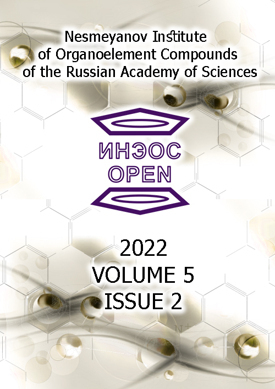2022 Volume 5 Issue 2 (Published 28 December 2022)



Dear colleagues,
I would like to dedicate this editorial to the memory of our friend and colleague, a member of the advisory board of our Journal and a renowned scientist of today, the full member of the Russian Academy of Sciences Viktor Ivanovich Ovcharenko, who only recently had celebrated his 70th birthday and had unexpectedly passed on the first day of December. I attended the funeral services in Novosibirsk, where a lot of warm words and sentiments had been expressed about this remarkable Scientist and person. His friends, students, and colleagues from peer institutes reminisced about bright moments of his biography that they had shared with him in the course of their education and professional careers.
It boggles the mind just how much Viktor Ivanovich had done during his life, so suddenly cut short… Hard as we had tried, we couldn't touch upon more than a smidgen of his achievements, visions, and plans. Now, we are facing the task of collecting his immeasurable legacy bit by bit.
It's incredibly sad that we will be doing this work without his participation. Not only would this have made our job easier, but this would have given it his patent systemic and multidirectional approach, customary to his own work. He was one of the modern ideologists of molecular magnetism, a member of the International Molecular Magnets Consulting Committee, while his lab is one of the world-renowned research centers in the field. Just stating that fact inspires confidence that, in this particular area, his plans and behests will be fulfilled by his numerous students with whom he had shared his expertise and experience.
It would be a lot harder to replace his phenomenal erudition in many aspects of modern chemistry, physics, biology, and medicine. He was the most amazing sounding board for discussing some of the most "out there" ideas touching upon subjects that seemed to be completely unconnected to the areas of his own research. He was a tactful opponent, showing that measure of interest that enabled one to crystallize bits of original thought from the bulk of triviality, fallacy, and insufficient competence. His scientific and overall erudition seemingly knew no bounds. He could discuss the particularities of Schopenhauer's legacy with philosophers, and the origins of the Kitezh-Grad legend with historians. He spoke a number of foreign languages, many of which he'd studied late in life.
Viktor Ivanovich was very proud to be an academician and thought of that title as an outstanding merit, while having been more that worthy of it for a long time. In him, we have lost an expert of the highest level—and that is the kind of loss that won't be helped easily, perhaps not at all. Not only was he a creator himself, he'd helped others to create as well—with a witty remark here, an "accidentally" found reference or suggesting a modeling sample there, and almost always with a kind, inspiring word. It's not possible to replace this loss, but we can strive to produce scientists of similar level over the years. For that purpose, it's important to look at him as an example, to be guided by his achievements, his attitude toward people, science, and education.
The scientific legacy of Viktor Ivanovich requires study and systematization. Here, of great help will be his close colleagues, coworkers, and fellow academicians, with many of whom he had collaborated professionally and maintained personal friendships. We can also rely on the assistance of his family, as Viktor Ivanovich had a happy family life, and his two sons are accomplished scientists in their own right in the area of biomedical research.
Let us not waste even one idea or a point of critical analysis as all of them are of immense value. We will start today with putting together the special issue of INEOS OPEN dedicated to the scientific legacy of Viktor Ivanovich. As the work on it proceeds, I am convinced we will be able to prepare a separate book-format volume that will preserve the memory of Viktor Ivanovich—one of the greatest scientists in the field of modern chemistry.
|
Sincerely yours, |
|
|
A. S. Goloveshkin and A. S. Golub INEOS OPEN, 2022, 5 (2), 27–37 DOI: 10.32931/io2206r Corresponding author: A. S. Goloveshkin, e-mail: golov-1@mail.ru |
|
|
S. E. Lyubimov, P. V. Cherkasova, and R. R. Aysin INEOS OPEN, 2022, 5 (2), 38–41 DOI: 10.32931/io2208a Corresponding author: S. E. Lyubimov, e-mail: lssp452@mail.ru |
|
|
A. N. Rodionov and A. A. Simenel INEOS OPEN, 2022, 5 (2), 42–45 DOI: 10.32931/io2207a Corresponding author: A. N. Rodionov, e-mail: rodalex@ineos.ac.ru |
|
|
K. V. Misyurina, M. I. Buzin, M. S. Parshina, R. R. Aysin, and O. A. Serenko INEOS OPEN, 2022, 5 (2), 46–50 DOI: 10.32931/io2209a Corresponding author: O. A. Serenko, e-mail: o_serenko@ineos.ac.ru |
|
|
N. V. Kuchkina, M. E. Grigoriev, S. A. Sorokina, A. V. Mihalchenko, V. Yu. Doluda, INEOS OPEN, 2022, 5 (2), 51–57 DOI: 10.32931/io2210a Corresponding author: N. V. Kuchkina, e-mail:n_firsova@yahoo.com |
|




